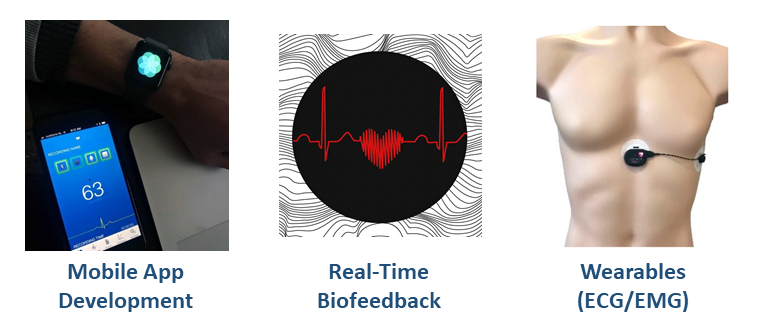Peters Mile High Lab for Emotional Wellness and Addiction Recovery

Lab Mission
The mission of the Peters Lab to use biofeedback to enhance overall emotional wellness. The techniques we use can be applied by anyone to manage stress and anxiety and are especially geared towards helping individuals recovering from substance use disorders. The overarching goal is to promote the ability to self-regulate and cope with emotional triggers.
Collaborations and Tools
Computational tools (e.g. machine learning, AI) coupled with wearable devices for biofeedback and mobile technology are changing the face of health care. We collaborate with clinicians and other neuroscientists to enhance our understanding of the impact of drug exposure on brain circuits and the different routes to relapse. Using this information, we advance towards the ultimate goal of developing novel treatment interventions.
Work We Do
The Mile High Lab conducts research in basic neuroscience and translational psychiatry. We have a number of different projects ongoing in an effort to apply the knowledge gained from bench to bedside. These include:
1. We have developed a mobile app that uses guided breathing exercises to elevate the user's heart-rate variability (HRV) in real-time through the animation of an onscreen visual cue. Increased HRV has been linked to overall wellness and reflects the engagement of the parasympathetic nervous system - the "anti-stress" system. We are at the stage where we need to launch the app on mobile platforms and beta test it to acquire a sufficiently large data set to validate and improve the algorithm used for biofeedback.
2. We are developing a second mobile app to determine whether second-scale changes in HRV are a reliable predictor of an emotional response. This app will expose users to a sequence of on-screen stimuli while recording changes in heart rate (HR) and HRV. Post-hoc analyses of the data will verify whether these stimuli were effective "triggers" in the user population. Another variant of this same project will use virtual reality (VR) stimuli to trigger changes in HR/HRV, as VR stimuli may be more immersive and potentially more effective than on-screen stimuli with the mobile-only version.
3. If projects 1 and 2 are successful, we plan to integrate the biofeedback algorithm from the mobile app within a VR environment to train users to implement self-regulation tactics to normalize their HR/HRV in the wake of emotional triggers. Once demonstrating safety and efficacy in the general population, the types of emotional triggers will be tailored towards substance use disorders, with the ultimate goal of using this approach as a form of cognitive-behavioral therapy in patient populations.
For more information see